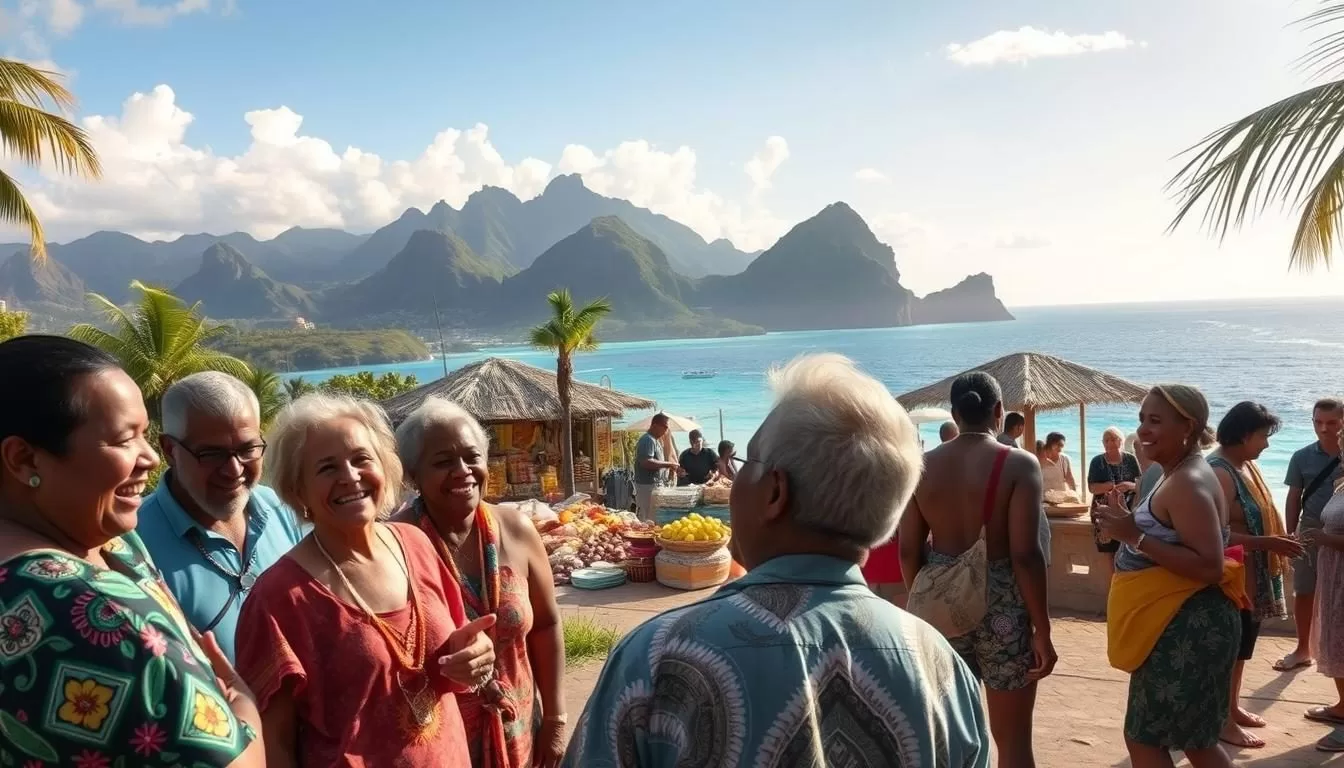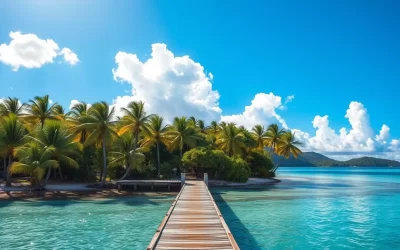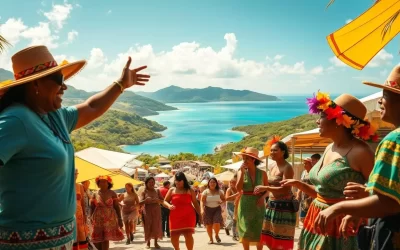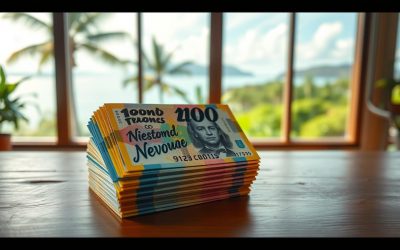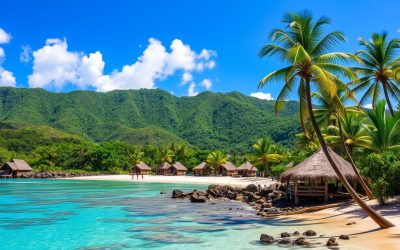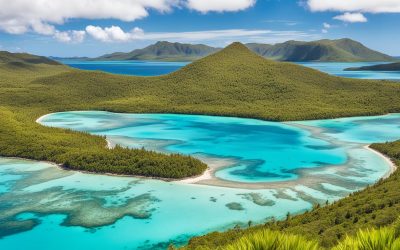Nestled in the Pacific Ocean, this archipelago is a fascinating blend of cultures and languages. French serves as the official language, established by constitutional law in 1992. It’s spoken by nearly 97.3% of the population aged 15 or older, making it a cornerstone of daily life.
Beyond French, the island is home to a rich tapestry of indigenous languages. Over 30 Melanesian languages, part of the Austronesian family, are spoken by the Kanak peoples. Drehu, Nengone, and Paicî are among the most widely spoken, reflecting the vibrant community heritage.
This linguistic diversity is a testament to the history and resilience of the island’s people. Efforts to preserve and teach these languages in schools highlight their cultural significance. Dive deeper to explore how this unique blend shapes life in this Pacific gem.
Exploring the Official French Language in New Caledonia
French became a cornerstone of daily life in this Pacific region through colonization. Introduced during the early colonial period, it quickly took root as the dominant language. By 1863, a decree mandated French-only education, ensuring its widespread adoption.
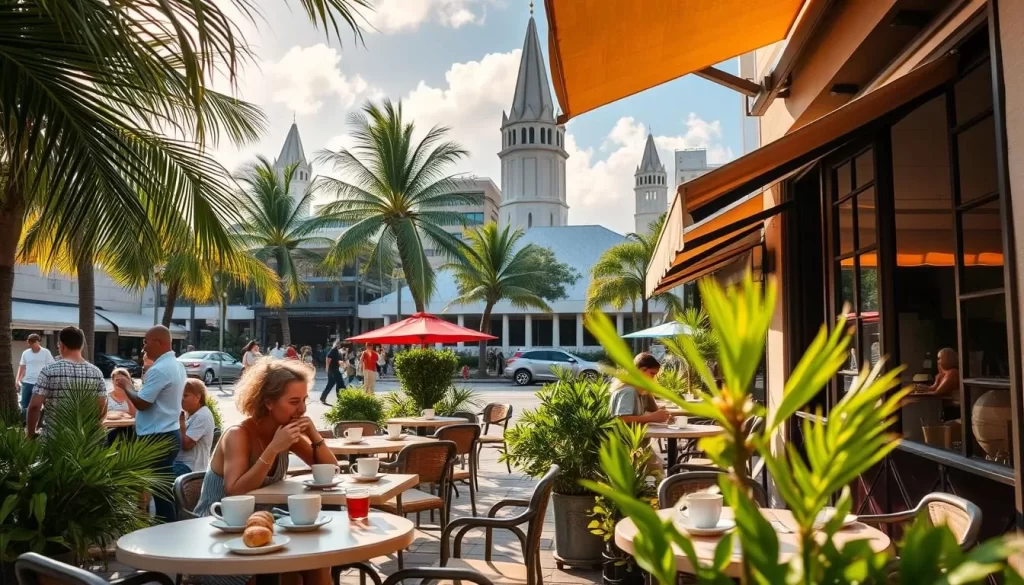
The Historical Roots of French in New Caledonia
The history of French in this region dates back to the mid-19th century. Colonization brought the language, and it was enforced through policies and education. The 1863 decree was pivotal, making French the sole medium of instruction in schools.
Over time, French became the primary language for communication in public life. Its influence grew as it was used in government, media, and daily interactions. This historical foundation continues to shape the linguistic landscape today.
Education and Public Life in a French-Speaking Society
French is deeply embedded in the education system. From primary school to university, it serves as the main language of instruction. This ensures that the younger generation is fluent in French, maintaining its dominance.
In public life, French is the go-to language for formal and informal settings. While localized variations exist, the standard form remains widely understood. This linguistic unity plays a key role in connecting the diverse population of the region.
New Caledonia: Official and widely spoken languages
The linguistic tapestry of this Pacific region is as vibrant as its cultural heritage. Over 30 indigenous tongues coexist with French, the official language, creating a unique multilingual environment. This diversity reflects the rich history and traditions of the island’s people.

Diversity within the Language Landscape
French dominates public life, but indigenous languages like Drehu, Nengone, and Paicî thrive in specific regions. Drehu is primarily spoken in the Loyalty Islands, while Nengone and Paicî are prevalent in Grande Terre. These languages are integral to the identity of the Kanak people.
Regional variations highlight the distinct linguistic traditions across the island. Rural areas see stronger use of indigenous tongues, while urban centers lean toward French. This balance showcases the adaptability of the population over time.
Preservation of Indigenous Tongues and Community Efforts
Efforts to preserve indigenous languages are gaining momentum. Schools now teach Kanak languages, ensuring younger generations stay connected to their heritage. Community-led initiatives also play a vital role in revitalizing these tongues.
“Language is the soul of a culture. Preserving it means preserving our identity.”
Organizations document oral traditions and promote bilingualism, bridging the gap between past and present. These efforts ensure that indigenous languages remain a living part of the community.
| Language | Region | Speakers |
|---|---|---|
| Drehu | Loyalty Islands | ~15,000 |
| Nengone | Northern Grande Terre | ~10,000 |
| Paicî | Southern Grande Terre | ~7,000 |
Indigenous and Minority Languages
Languages in this region tell stories of resilience, identity, and heritage. The archipelago is home to over 28 indigenous languages, each reflecting the deep history of its people. Among these, Kanak and Melanesian languages stand out as pillars of cultural identity.

An Overview of Kanak and Melanesian Languages
Kanak languages, such as Drehu and Nengone, are spoken by around 10% of the population. These languages are more than just a means of communication; they are a bridge to the past. Oral traditions play a vital role in preserving stories, customs, and values.
Efforts to revitalize these languages are gaining momentum. Approximately 25% of primary schools now offer bilingual education, ensuring younger generations stay connected to their roots. This shift highlights the importance of language in shaping personal and community identity.
Languages of Ethnic Minorities and Their Cultural Significance
Beyond Kanak languages, the region is enriched by minority tongues spoken by immigrant communities. These languages add to the linguistic tapestry, reflecting the island’s diverse cultural heritage. For many, speaking their native language at home is a way to maintain their unique identity.
Historical education policies once suppressed these languages, but today, there is a growing emphasis on preservation. Community-led initiatives and cultural academies are working to document and promote these lesser-spoken tongues.
| Language | Region | Speakers |
|---|---|---|
| Drehu | Loyalty Islands | ~15,000 |
| Nengone | Northern Grande Terre | ~10,000 |
| Paicî | Southern Grande Terre | ~7,000 |
For more insights into the linguistic landscape of this region, explore New Caledonia’s cultural diversity and language revitalization efforts.
Cultural and Historical Impact on Linguistic Diversity
The linguistic landscape of this Pacific territory has been shaped by centuries of history and cultural exchange. From colonial rule to modern revitalization efforts, the evolution of language reflects the resilience of its people.

Colonial Influence and the Evolution of Language
French colonization in the mid-19th century introduced the language that dominates public life today. By 1863, a decree mandated French-only education, ensuring its widespread adoption. This policy significantly reduced the use of indigenous tongues in formal settings.
Over time, French became the primary medium for government, media, and education. Its dominance was further reinforced during World War II, when over 50,000 American troops were stationed here. This period marked a turning point in the linguistic landscape.
The Legacy of Penal Colonization on Local Speech
The penal colony system, established in 1864, brought thousands of French convicts to the island. Their presence further entrenched French as the dominant language, while indigenous tongues were marginalized.
Despite this, local communities preserved their linguistic heritage through oral traditions and family practices. This resilience laid the foundation for modern revitalization efforts.
Modern Policies and Revitalization of Regional Languages
Today, there is a renewed focus on preserving indigenous languages. The Nouméa Accord of 1998 granted significant autonomy and paved the way for initiatives like the Academy of Kanak Languages, established in 2007.
Educational programs now incorporate Kanak languages, fostering bilingualism and cultural pride. Community-led workshops and media projects also play a vital role in keeping these tongues alive.
“Language is the bridge between our past and our future. Preserving it ensures our identity endures.”
For more insights into the linguistic dynamics of this region, explore New Caledonia’s multilingual landscape.
Conclusion
The blend of French and indigenous tongues in this Pacific territory reflects a unique cultural harmony. French remains the dominant language, shaping public life and education, while Kanak languages like Drehu and Nengone thrive in local communities. Despite historical challenges, these indigenous tongues are celebrated and preserved through modern initiatives.
Efforts to revitalize Kanak languages include bilingual education and community-led projects. These steps ensure younger generations stay connected to their heritage. The island’s linguistic diversity is a testament to its rich history and resilience.
Explore more about the enduring presence of Kanak languages and their cultural significance. Reflect on how this unique blend of language new caledonia shapes the identity of its people today.
The above is subject to change.
Check back often to TRAVEL.COM for the latest travel tips and deals.
Here are some Tours & Sightseeing suggestions that might pique your interests!
